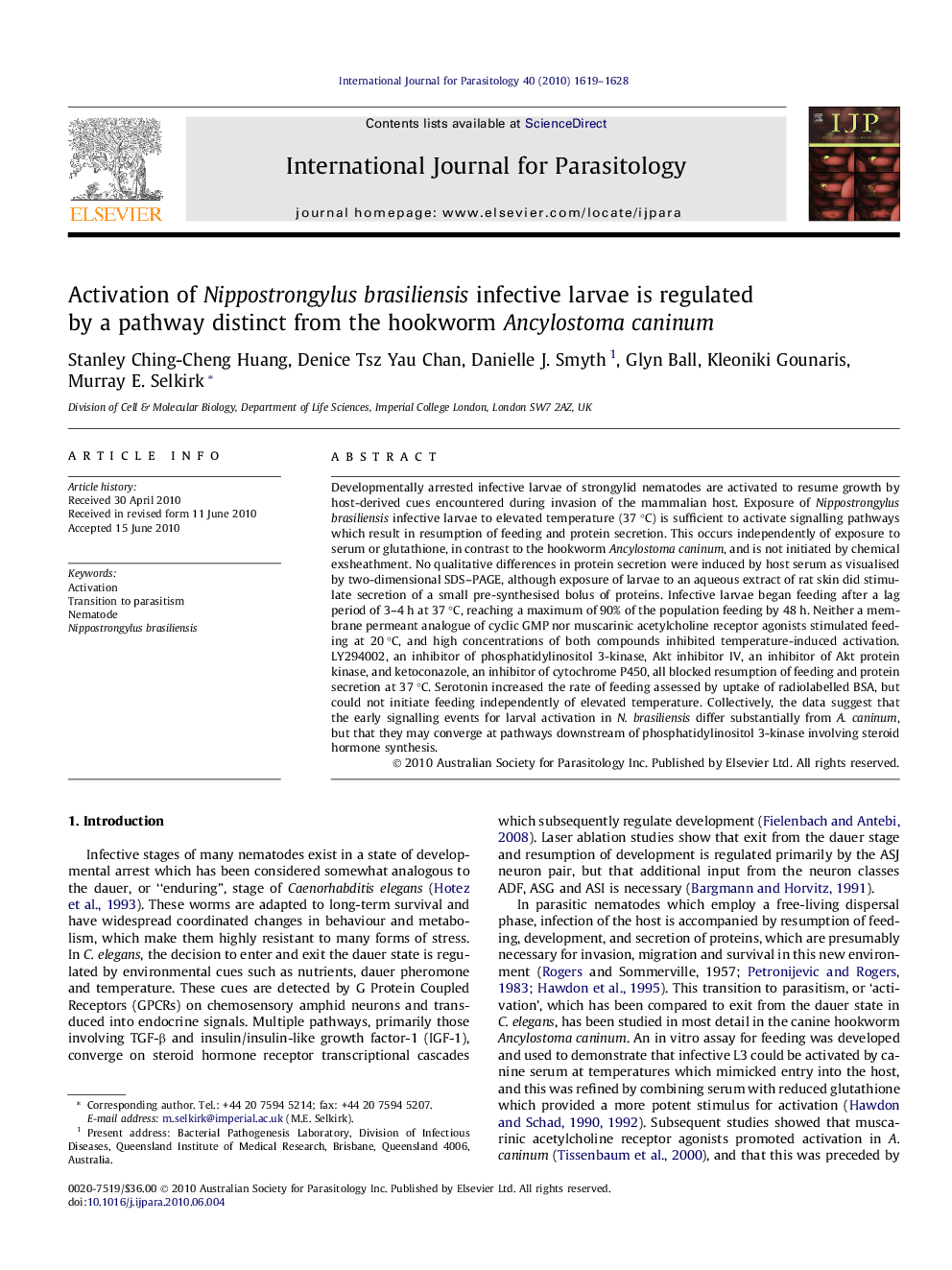| کد مقاله | کد نشریه | سال انتشار | مقاله انگلیسی | نسخه تمام متن |
|---|---|---|---|---|
| 8500294 | 1553733 | 2010 | 10 صفحه PDF | دانلود رایگان |
عنوان انگلیسی مقاله ISI
Activation of Nippostrongylus brasiliensis infective larvae is regulated by a pathway distinct from the hookworm Ancylostoma caninum
دانلود مقاله + سفارش ترجمه
دانلود مقاله ISI انگلیسی
رایگان برای ایرانیان
کلمات کلیدی
موضوعات مرتبط
علوم زیستی و بیوفناوری
ایمنی شناسی و میکروب شناسی
انگل شناسی
پیش نمایش صفحه اول مقاله

چکیده انگلیسی
Developmentally arrested infective larvae of strongylid nematodes are activated to resume growth by host-derived cues encountered during invasion of the mammalian host. Exposure of Nippostrongylus brasiliensis infective larvae to elevated temperature (37 °C) is sufficient to activate signalling pathways which result in resumption of feeding and protein secretion. This occurs independently of exposure to serum or glutathione, in contrast to the hookworm Ancylostoma caninum, and is not initiated by chemical exsheathment. No qualitative differences in protein secretion were induced by host serum as visualised by two-dimensional SDS-PAGE, although exposure of larvae to an aqueous extract of rat skin did stimulate secretion of a small pre-synthesised bolus of proteins. Infective larvae began feeding after a lag period of 3-4 h at 37 °C, reaching a maximum of 90% of the population feeding by 48 h. Neither a membrane permeant analogue of cyclic GMP nor muscarinic acetylcholine receptor agonists stimulated feeding at 20 °C, and high concentrations of both compounds inhibited temperature-induced activation. LY294002, an inhibitor of phosphatidylinositol 3-kinase, Akt inhibitor IV, an inhibitor of Akt protein kinase, and ketoconazole, an inhibitor of cytochrome P450, all blocked resumption of feeding and protein secretion at 37 °C. Serotonin increased the rate of feeding assessed by uptake of radiolabelled BSA, but could not initiate feeding independently of elevated temperature. Collectively, the data suggest that the early signalling events for larval activation in N. brasiliensis differ substantially from A. caninum, but that they may converge at pathways downstream of phosphatidylinositol 3-kinase involving steroid hormone synthesis.
ناشر
Database: Elsevier - ScienceDirect (ساینس دایرکت)
Journal: International Journal for Parasitology - Volume 40, Issue 14, December 2010, Pages 1619-1628
Journal: International Journal for Parasitology - Volume 40, Issue 14, December 2010, Pages 1619-1628
نویسندگان
Stanley Ching-Cheng Huang, Denice Tsz Yau Chan, Danielle J. Smyth, Glyn Ball, Kleoniki Gounaris, Murray E. Selkirk,